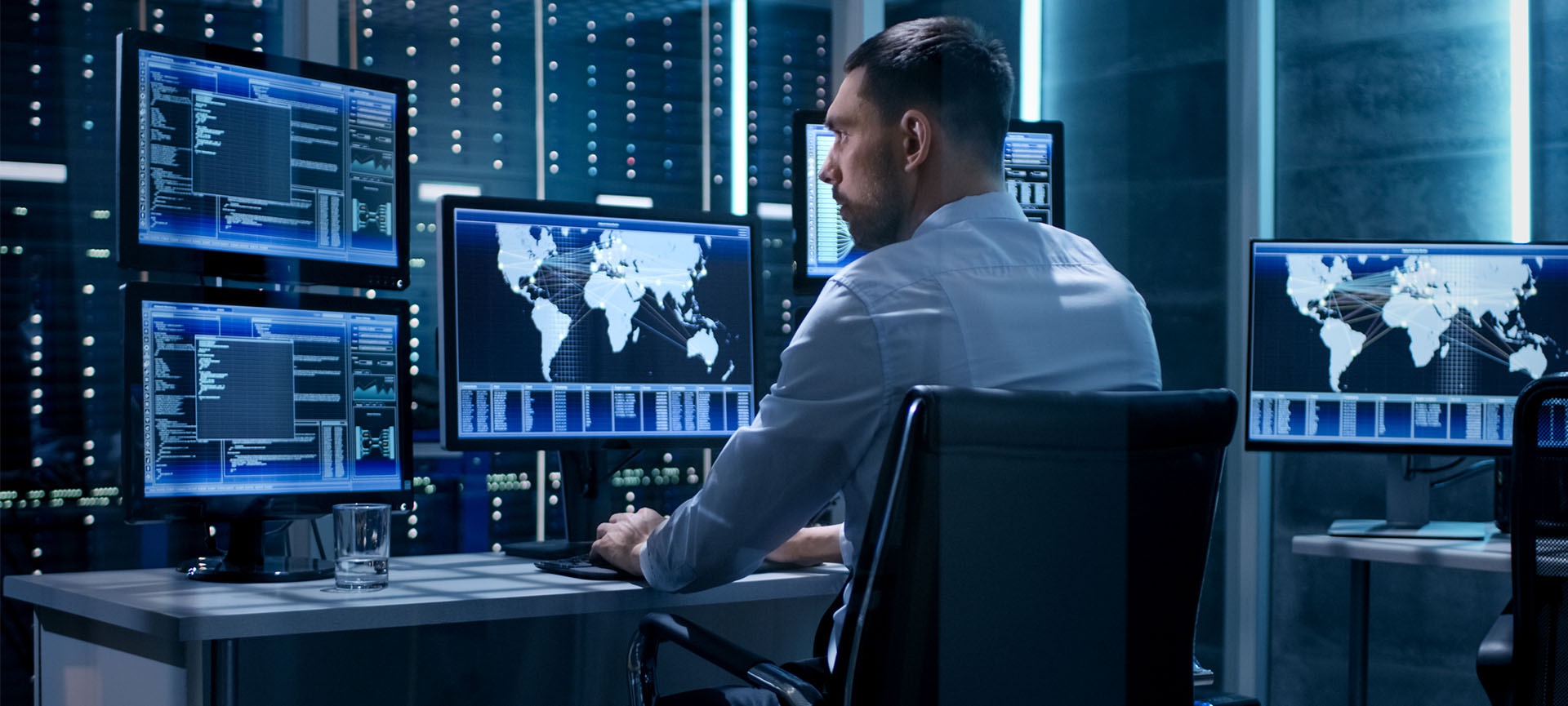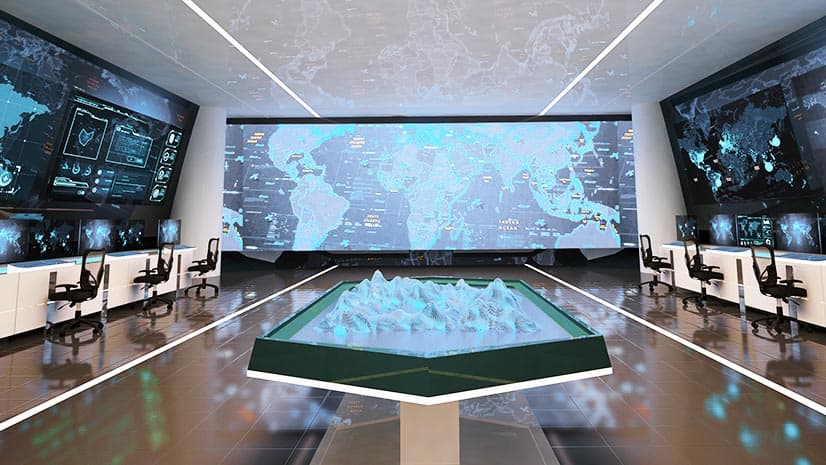From Cybersecurity to Physical Steps: Strengthening Company Safety in an Altering Globe
By incorporating the toughness of both cybersecurity and physical protection, business can develop a detailed defense strategy that attends to the varied array of threats they encounter. In this discussion, we will discover the changing threat landscape, the demand to integrate cybersecurity and physical safety and security, the execution of multi-factor verification procedures, the relevance of staff member recognition and training, and the adjustment of security steps for remote labor forces. By taking a look at these essential areas, we will certainly obtain beneficial understandings right into just how organizations can strengthen their business security in an ever-changing globe.
Understanding the Transforming Hazard Landscape
The advancing nature of the modern globe necessitates a detailed understanding of the changing hazard landscape for effective company safety and security. It is critical for companies to remain notified and adapt their security measures to deal with these developing threats.
One secret aspect of comprehending the transforming risk landscape is acknowledging the various sorts of hazards that companies encounter. Cybercriminals are constantly creating brand-new strategies to manipulate susceptabilities in computer systems and networks. These hazards can vary from malware and ransomware attacks to phishing scams and social engineering methods. Furthermore, physical threats such as burglary, criminal damage, and company espionage continue to be common concerns for businesses.
Monitoring and evaluating the danger landscape is essential in order to identify prospective threats and vulnerabilities. This entails staying upgraded on the most up to date cybersecurity trends, assessing hazard knowledge records, and carrying out routine threat evaluations. By understanding the altering risk landscape, organizations can proactively carry out proper protection steps to alleviate threats and shield their assets, reputation, and stakeholders.
Integrating Cybersecurity and Physical Security
Incorporating cybersecurity and physical protection is essential for detailed company protection in today's digital and interconnected landscape. As companies increasingly rely on modern technology and interconnected systems, the boundaries between physical and cyber risks are becoming obscured. To properly safeguard versus these risks, a holistic technique that integrates both cybersecurity and physical safety and security actions is vital.
Cybersecurity focuses on shielding electronic properties, such as networks, systems, and information, from unauthorized accessibility, disturbance, and burglary. Physical safety and security, on the various other hand, encompasses measures to protect physical properties, individuals, and centers from hazards and susceptabilities. By incorporating these two domain names, organizations can resolve vulnerabilities and risks from both physical and digital angles, thus enhancing their general safety position.
The integration of these 2 disciplines enables a more thorough understanding of safety and security dangers and makes it possible for a unified feedback to occurrences. Physical accessibility controls can be enhanced by incorporating them with cybersecurity methods, such as two-factor authentication or biometric recognition. Cybersecurity steps can be matched by physical safety measures, such as monitoring video cameras, alarm systems, and safe and secure gain access to factors.

Implementing Multi-Factor Verification Actions
As organizations significantly focus on detailed protection steps, one effective approach is the execution of multi-factor verification measures. Multi-factor verification (MFA) is a protection approach that requires users to provide numerous kinds of recognition to access a system or application. This technique adds an extra layer of protection by integrating something the individual recognizes, such as a password, with something they have, like a protection or a fingerprint token.
By applying MFA, companies can considerably enhance their safety position - corporate security. Typical password-based authentication has its limitations, as passwords can be quickly jeopardized or forgotten. MFA minimizes these risks by including an extra verification element, making it extra hard for unapproved individuals to access to delicate information
There are a number of kinds of multi-factor authentication methods readily available, consisting of biometric verification, SMS-based confirmation codes, and equipment symbols. Organizations require to examine their details requirements and select one of the most appropriate MFA option for their requirements.
Nevertheless, the application of MFA should be very carefully planned and executed. It is important to strike a balance in between protection and functionality to protect against user irritation and resistance. Organizations needs to likewise take into consideration prospective compatibility concerns and provide appropriate training and assistance to ensure a smooth shift.
Enhancing Staff Member Understanding and Training
To reinforce corporate protection, organizations have to focus on boosting staff member understanding and training. In today's rapidly advancing risk landscape, employees play a critical role in safeguarding a company's sensitive info i thought about this and possessions. Numerous safety breaches happen due to human mistake or absence of understanding. As a result, organizations need to spend in detailed training programs to enlighten their staff members regarding prospective dangers and the very best techniques for reducing them.
Reliable employee understanding and training programs need to cover a vast array of subjects, consisting of data protection, phishing strikes, social design, password hygiene, and physical safety and security steps. These programs must be tailored to the certain demands and obligations of different worker duties within the company. Routine training simulations, workshops, and sessions can help staff members create the needed skills and understanding to identify and respond to security threats effectively.
Furthermore, organizations need to urge a society of security recognition and give recurring updates and tips to maintain staff members educated concerning the latest dangers and mitigation techniques. This can be done through interior communication networks, such as e-newsletters, intranet websites, and e-mail projects. By cultivating a security-conscious labor force, companies can significantly lower the chance of protection cases and protect their beneficial possessions from unauthorized gain access to or concession.

Adapting Protection Measures for Remote Workforce
Adjusting business safety steps to fit a remote labor force is crucial in guaranteeing the defense of delicate information and possessions (corporate security). With the enhancing fad of remote work, organizations must implement ideal safety procedures to reduce the dangers connected with this brand-new method of working
One important facet of adjusting safety and security measures for remote work is establishing safe and secure communication networks. Encrypted messaging platforms and online personal networks (VPNs) can aid secure sensitive info and avoid unapproved gain access to. Furthermore, organizations must enforce using solid passwords and multi-factor authentication to improve the security of remote gain access to.
One more vital factor to consider is the execution of protected remote gain access to remedies. This includes providing workers with protected accessibility to company resources and information through online desktop facilities (VDI), remote check it out desktop protocols (RDP), or cloud-based options. These modern technologies guarantee that sensitive details continues to be safeguarded while enabling employees to execute their functions effectively.
Finally, thorough security understanding training is critical for remote staff members. Training sessions should cover ideal practices for securely accessing and taking care of delicate link info, determining and reporting phishing attempts, and maintaining the general cybersecurity hygiene.
Final Thought
In final thought, as the risk landscape continues to develop, it is critical for organizations to reinforce their security measures both in the cyber and physical domain names. Incorporating cybersecurity and physical safety and security, applying multi-factor authentication procedures, and boosting employee understanding and training are crucial steps towards achieving robust company protection.
In this discussion, we will discover the altering hazard landscape, the demand to incorporate cybersecurity and physical security, the execution of multi-factor verification procedures, the relevance of staff member recognition and training, and the adaptation of protection procedures for remote workforces. Cybersecurity actions can be enhanced by physical security steps, such as security electronic cameras, alarms, and secure accessibility points.
As companies significantly focus on comprehensive safety and security measures, one efficient method is the execution of multi-factor authentication procedures.In verdict, as the risk landscape continues to advance, it is crucial for organizations to reinforce their protection gauges both in the cyber and physical domain names. Integrating cybersecurity and physical safety, executing multi-factor verification steps, and enhancing staff member understanding and training are vital actions in the direction of accomplishing durable company safety.